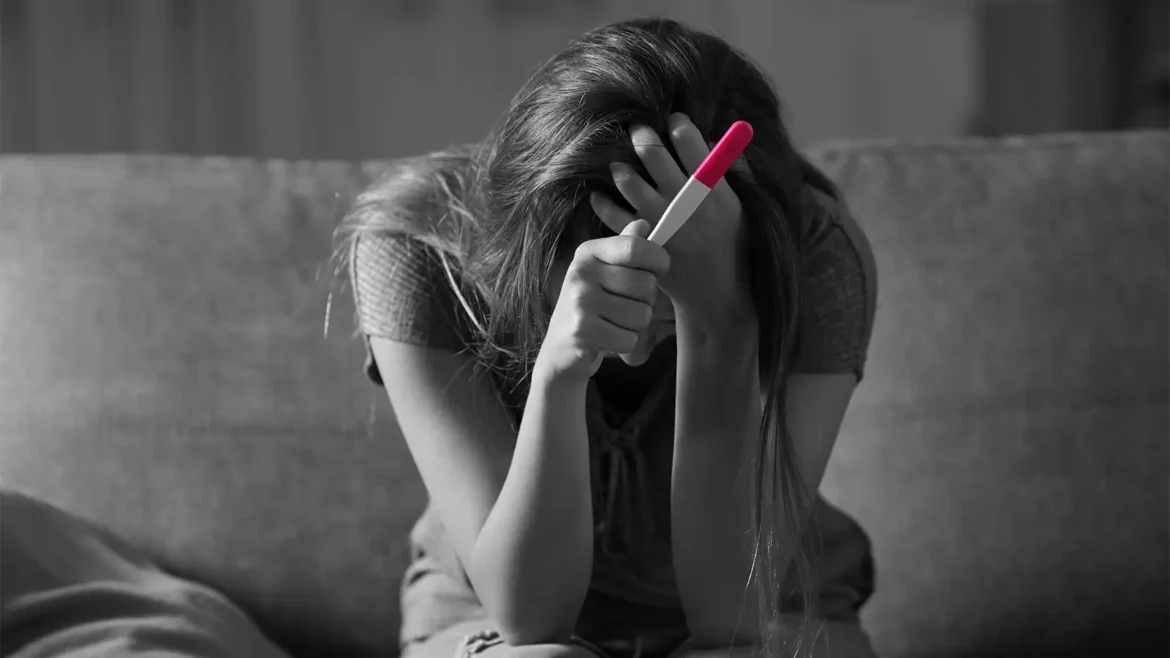The Dobbs v. Jackson Supreme Court decision, which overturned the 1973 Roe v. Wade verdict granting the right to an abortion in the United States, gave discussions about access to reproductive care a new importance. This topic has been under discussion for more than a year by an interdisciplinary team from the University of Pennsylvania and Children’s Hospital of Philadelphia (CHOP).
Restricting access to abortion is now linked to a higher risk of suicide for women of reproductive age, according to research by Rebecca Waller of Penn’s Department of Psychology in the School of Arts & Sciences, Jonathan Zandberg of the Wharton School, and Ran Barzilay of the Perelman School of Medicine and CHOP. They did not find a similar association for older women.
“Stress is a key contributor to mental health burden and a major driver of increased suicide risk,” says Barzilay, a child-adolescent psychiatrist and neuroscientist. “We found that this particular stressor–restriction to abortion–affects women of a specific age in a specific cause of death, which is suicide. That’s the 10,000-foot view.”
Barzilay, Zandberg, and Waller’s research interests coincided, leading to the creation of the study. Barzilay focuses on the variables that influence a person’s mental health trajectory and suicide risk, whereas Zandberg investigates how limits on reproductive care effect gender inequity. Waller focuses on the stresses in the environment that have an impact on parenting and subsequent child development. This study also included contributions from Barzilay’s lab’s data scientist Elina Visoki.
According to Zandberg’s earlier research, women’s job goals and family planning preferences must make expensive trade-offs when access to reproductive care is more severely constrained.
The researchers decided to examine other aspects of this dynamic, looking at the mental health implications of enforcing strict reproductive rights and more specifically, the risk of suicide, the third leading cause of death for 25- to 44-year-olds in the U.S.
They conducted what’s called a difference-in-differences analysis, using state-level data from 1974 through 2016 and covering the entire population of adult women during that time. “We constructed three indices that measure access to reproductive care by looking at the enforcement of state-level legislation,” Zandberg says. “Every time a state-enforced a law that was related to reproductive care, we incorporated it into the index.” Then, among women of reproductive age, they analyzed suicide rates before and after the laws took effect, comparing those numbers to broad suicide trends and to rates in places without such restrictions.
“Comparatively, women who experienced the shock of this type of restrictive legislation had a significant increase in the suicide rate,” Zandberg says.
Next, the researchers examined whether the finding was specific to women of reproductive age or could be observed in other populations. As a comparison, they ran the same analysis for all 45- to 64-year-old women between 1974 and 2016. They did not find any effect. Finally, they examined another common cause of death, motor vehicle death rates, and saw no effect. Controlling for potential confounders like the economy and political climate did not change the results.
Though the findings do not prove that restricting abortion access caused suicide rates to increase, the researchers say the analytic approach is one of the most rigorous methods to enable causal inference. “This association is robust–and it has nothing to do with politics,” Barzilay says. “It’s all backed by the data.”
There are limitations to these conclusions, including the fact that the researchers did not have access to data about the experiences or mental health of individual women. In other words, “we’re looking at the connection between summary data about causes of death at the state level and policy and politics over many decades. Yet, every death represents an individual moment of tragedy,” Waller says. “So, there’s clearly an awful lot more that we need to understand about what these findings mean for individual suicide risk.”
Yet even with the limitations, the researchers say the findings have clinical, policy, and ethical implications. For one, recognizing this link can change how physicians and other healthcare providers approach suicide risk classification in women of reproductive age. Beyond that, it points to a need for better suicide-prevention policies and adds hard data to the ethical debate around abortion access.
Big picture, the Penn-CHOP team says it’s important to have insight into current trends to plan for future scenarios in which partial restrictions morph into full-fledged restrictions or even abortion criminalization. “Whatever your view is on all of this, it’s all over the news. It’s everywhere,” Waller says. “The women internalizing the stories they hear are the ones who these restrictions will affect the most.”





